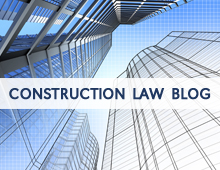The recent decision by the Supreme Court, Appellate Division, Second Department, New York, in the case of Mikoma Electric, LLC, et al. v. Otek Builders, LLC, et al., emphasizes the importance of adhering to licensing requirements within the construction industry. The case revolves around a dispute where plaintiffs, Mikoma Electric, LLC (Mikoma Electric), and Mikoma Technology of Power and Lights Wiring and Control Limited Liability Partnership (Mikoma Tech), sought to recover damages for breach of contract from Otek Builders, LLC, the general contractor for various WeWork properties.
Mikoma Tech, which was not licensed to perform electrical work in New York City, subcontracted with Otek Builders to carry out electrical work on several properties. Although Mikoma Electric, a licensed entity, obtained the necessary permits and allegedly supervised the work, the court found that this arrangement did not satisfy the licensing requirements stipulated by the Administrative Code of the City of New York § 27–3017(a), This section mandates that electrical work must be performed by a licensed master electrician or under their direct supervision.
The defendants moved to dismiss the complaint and discharge the mechanic’s liens filed by Mikoma Tech, arguing that Mikoma Tech’s lack of a proper license barred its recovery. The Supreme Court initially denied this motion, but upon appeal, the Appellate Division reversed the decision. The appellate court held that the documentary evidence provided by the defendants, which included printouts from the New York City Department of Buildings’ webpage, did not meet the criteria for documentary evidence under CPLR 3211(a)(1). However, the court agreed that Mikoma Tech’s failure to obtain the required license precluded it from recovering under breach of contract or quantum meruit theories and from foreclosing on its mechanic’s liens. Consequently, the Appellate Court dismissed the complaint as to Mikoma Tech and discharged the mechanic’s liens filed by Mikoma Tech.
This decision underscores the strict interpretation of licensing statutes aimed at protecting public health and welfare. The court emphasized that employing or subcontracting work to a licensed entity does not fulfill the statutory requirements if the primary contractor is unlicensed. Consequently, Mikoma Tech’s argument that it should recover because Mikoma Electric, a licensed subcontractor, performed the work was deemed insufficient.
The ruling serves as a critical reminder for contractors and subcontractors in New York City to ensure compliance with licensing regulations to avoid forfeiting their lien rights and the right to recover payments for their work. It also highlights the importance of understanding and adhering to legal requirements in contractual agreements within the construction industry.
Jose A. Aquino (@JoseAquinoEsq on X) is a special counsel in the New York office of Duane Morris LLP, where he is a member of the Construction Group and of the Cuba Business Group. Mr. Aquino focuses his practice on construction law, lien law and government procurement law. This blog is prepared and published for informational purposes only and should not be construed as legal advice. The views expressed in this blog are those of the author and do not necessarily reflect the views of the author’s law firm or its individual attorneys.



